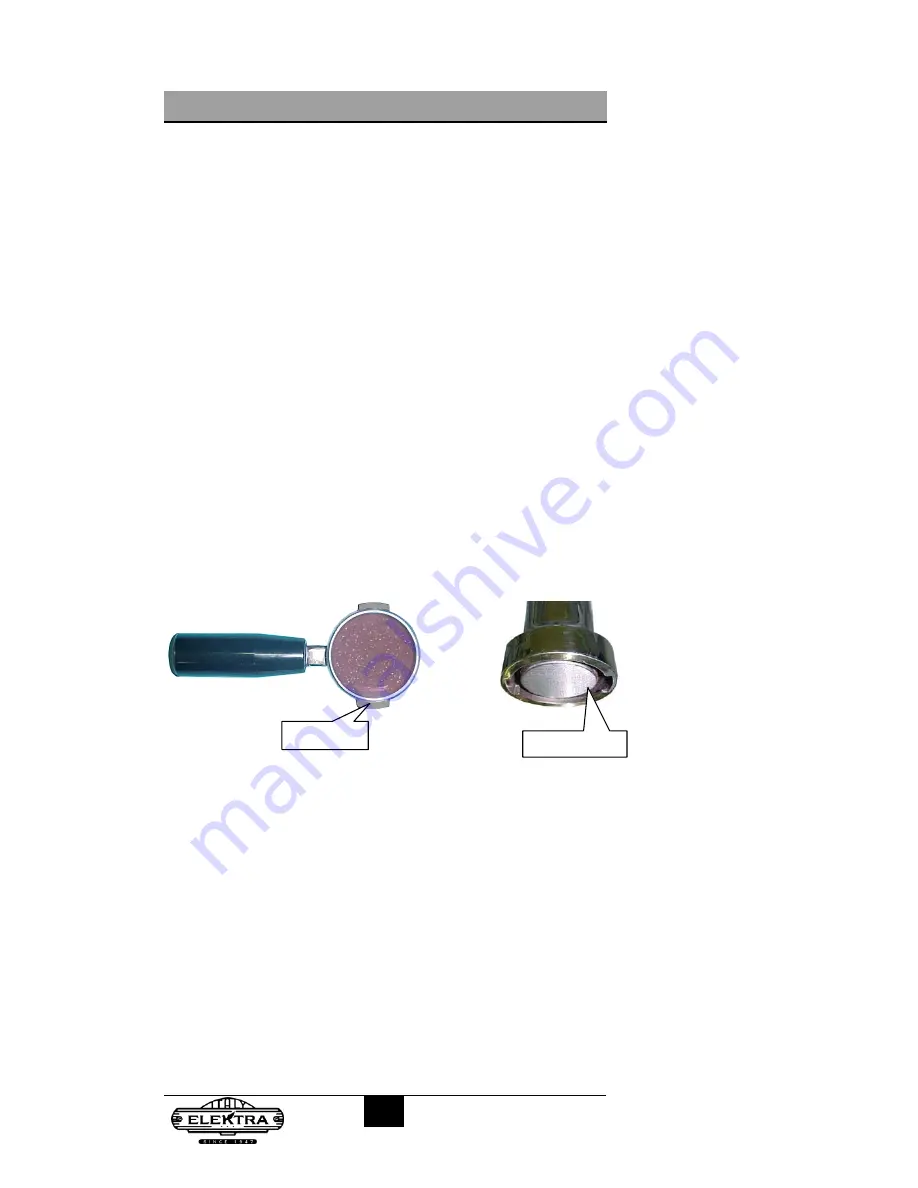
Background information
Operating principles
The beauty of the Elektra Micro casa a leva is that it uses a traditional
spring-loaded piston to produce the eight bars of pressure needed to
pump hot water through the coffee grounds. The water in the boiler is
heated to give a boiler pressure of around one bar of pressure. The
boiler pressure is governed by a pressure release valve (called a
pressure-stat
) that allows maximum pressure to be reached
regardless of the boiler water level.
The spring-loaded piston is compressed by pulling a lever down. This
allows the pressurised boiler water to enter the group head chamber.
When the lever is released, the spring causes the piston to return to
the upright position, forcing water through the coffee grounds to
extract a true flavoursome espresso.
This machine allows the user to extract coffee and froth/heat milk at
the same time.
The group head
The coffee handle fits into the group head, with water flowing through
a “shower screen”, as below. If the basket is too full, the grounds will
press against the shower screen, stopping the handle from being
fitted to the group head.
shower screen
locating lug
Coffee handle and group head.
Water passes through the shower screen to give an
even flow of water through the coffee grounds.
The coffee handle has two lugs either side that locate into two slots in
the group head. The handle is fitted by aligning the lugs and slots,
then pushing the handle up so it can be twisted to the right.
When the coffee handle is fitted into the group head, a rubber ring
inside the group head seals against the top of the filter basket. It’s
therefore important to make sure the top of the filter basket is
clean
and free of coffee grounds
. Otherwise leakage can occur, and in
some cases the rubber seal can become dislodged due to a build-up
of coffee grounds behind the seal.
Training manual – Micro casa a leva
9












